Peter Cuong Franklin is the executive chef of Anan Saigon, a modern Vietnamese restaurant tucked inside the Cho Cu wet market. A graduate of Le Cordon Bleu, Peter studied food anthropology and gastronomy in America, and honed his skills at restaurants such as Chicago's Alinea and Caprice in Hong Kong, before returning to Vietnam where he's on a mission to reimagine Vietnamese cuisine. Here he shares memories and favourite dishes from his hometown, Da Lat.
My mom emigrated from the central province of Quang Nam to Da Lat when she was a teenager. When I was a young boy, I remember going to the Da Lat market with her to buy ingredients for making her mì Quảng, a classic pork noodle soup with yellow turmeric rice noodles. The market was a special place full of strange meats, seafood, colourful vegetables and busy activities of people buying and selling things.
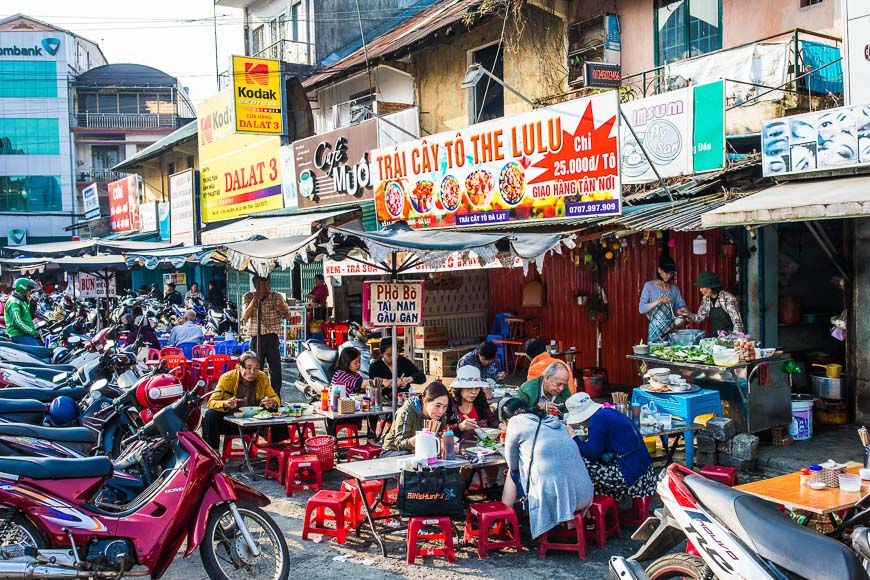
Today, the best Da Lat dishes are made with fresh produce and meats that are sourced from the farms surrounding the hill town. The city is blessed with fertile land and a cool highlands climate, so just about anything can be grown here. Some of the best ingredients in Vietnam can be found in Da Lat, such as avocados, strawberries, asparagus, artichokes, grapes, tea, coffee, flowers and wild mountain mushrooms.
During the colonial period the French established Da Lat as a hill station to escape from the sweltering Saigon heat and as a wellness center for soldiers and civil servants. From small numbers of ethnic minorities in the early days, Da Lat’s population has increased dramatically. Most new residents -- like my mother -- come from other parts of Central Vietnam. Because of this, many famous dishes from the central region such as bánh bèo, bánh xèo, and bún bò Huế can be found in Da Lat. Da Lat offers some of the most diverse food in Vietnam, thanks to its temperate mountain climate and mix of culinary traditions, from different regions of Vietnam, as well as Europeans, Chinese and ethnic minorities.
Here are five dishes I always eat when I find myself back in Da Lat.
Mì Quảng
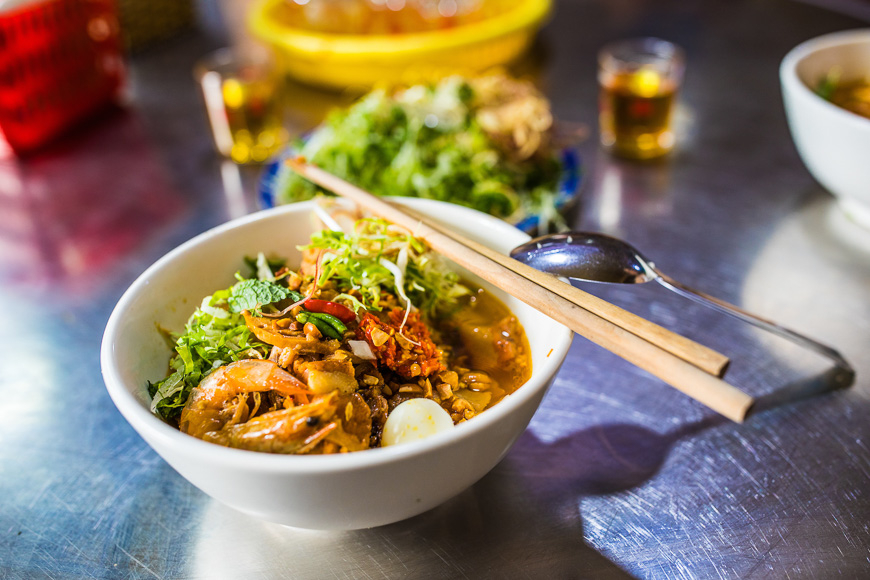
One of my mom’s specialty dishes is mì Quảng. I’ve eaten my mom’s version and many other versions before, but I recently encountered a flavorsome and rich version of this dish, deep inside Da Lat’s wet market. The broth was enriched with so much pork knuckle that it resembled a thick, rich tonkotsu ramen rather than the light and sometimes watery version you find in many places. This bowl of pork knuckle broth with turmeric noodles was a revelation.
Try it: Mì Quảng Thành, 58C Phan Đình Phùng, Da Lat
Bánh Bèo
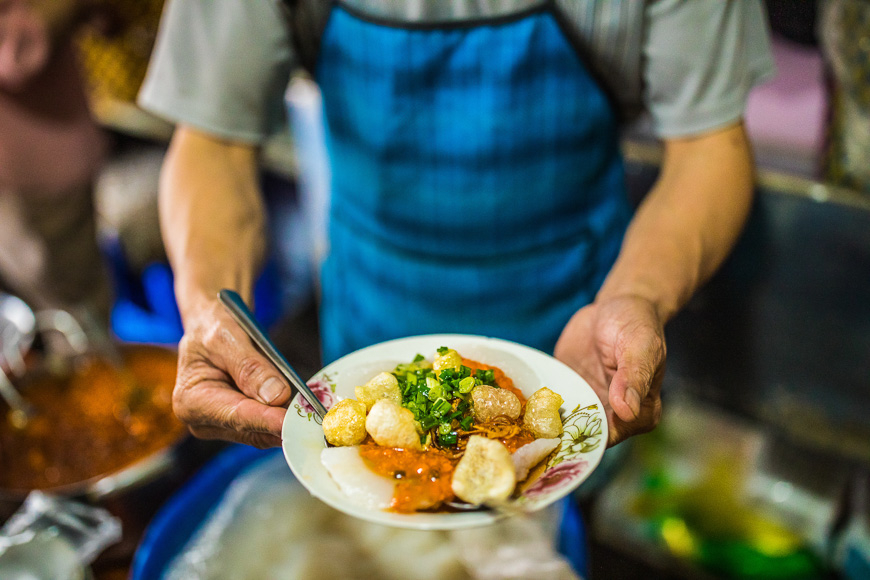
Bánh bèo is one of my favorite dishes because of its simplicity and purity. The original version comes from Hue, and is a spoon-sized bite made of rice and tapioca flour, steamed in a small ceramic bowl. After steaming, the bánh bèo is scooped gently out of the steaming bowl, and served with a light fish sauce, fried shallots, fresh chili and crispy pork skin -- simply delicious! Try it as a snack in the morning or afternoon.
Try it: Banh Beo so 4 Ba Huong, 402 Phan Dinh Phung, Da Lat
Phở Bò
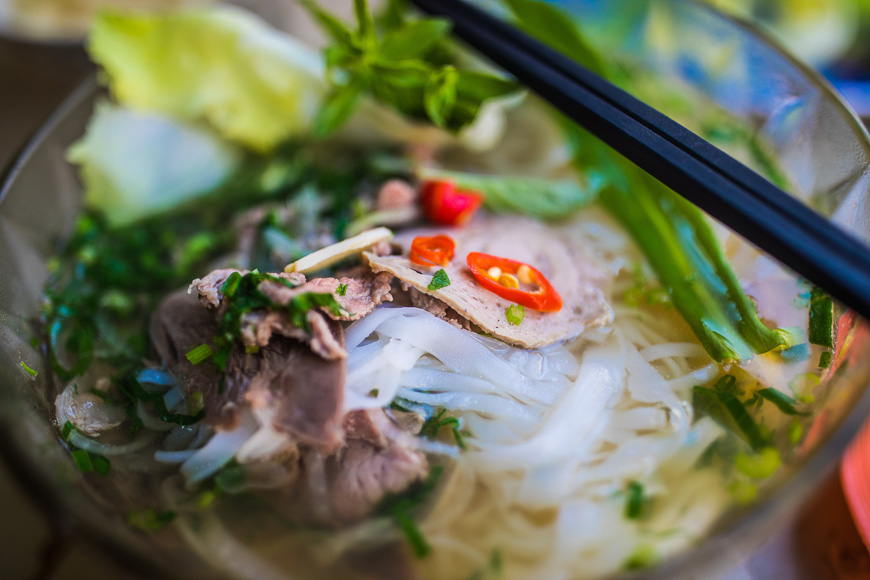
The Da Lat-style phở is quite different from other regions. It’s Hanoi-style phở meets the bountiful, fertile mountain climate of Da Lat with the inclusion of a plate of fresh herbs and crisp European lettuce greens introduced by the French during the colonial era. Is this fusion? If I were to include Da Lat lettuce with the phở at my restaurant Anan Saigon, most people would probably scream “fusion.” This is the way the local people eat phở everyday here in Da Lat. It’s only natural to include the beautiful lettuce greens that they have available.
Try it: Quán 1C, 1 Tăng Bạt Hổ, Da Lat
Bánh Mì Xíu Mại
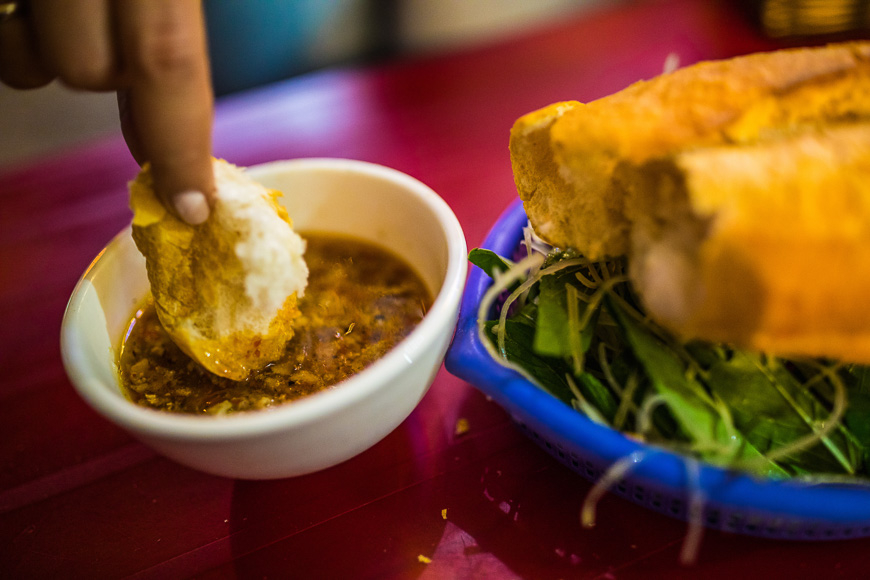
Unlike the cold cuts Saigon-style bánh mì, the Da Lat-style bánh mì xiu mai is served hot. Due to colder climate in this mountain city, the sandwich is served as a bowl of warm pork meatball broth, a warm grilled baguette, and a mixture of shredded papaya and fresh herbs. Most locals eat one but this lady knows I usually order two with extra chili because it’s so delicious and I love a little heat with my bánh mì.
Try it: Bánh mì xíu mại BH, 16 Nguyễn Chí Thanh, Da Lat
Bánh Căn
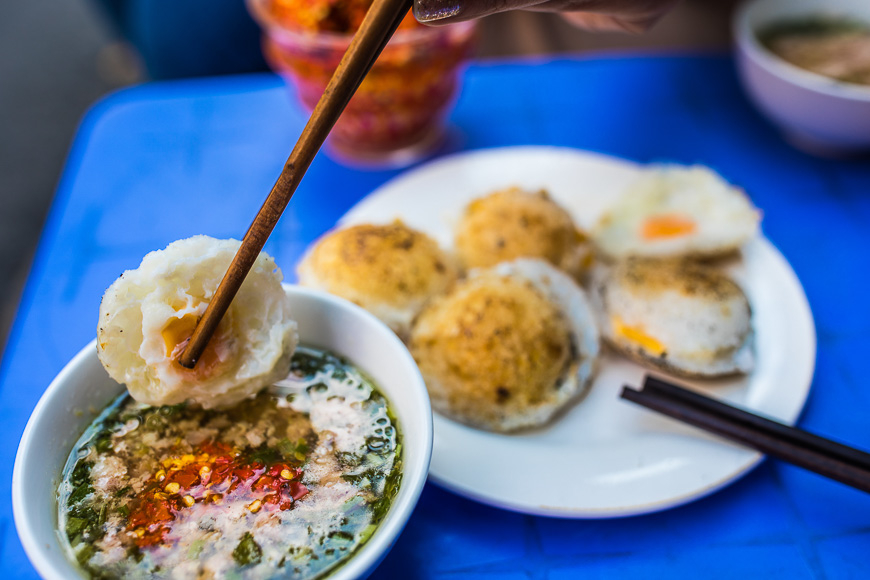
Bánh căn is a Da Lat dish that evolved from the Hue bánh bèo steamed rice cake. Due to its cooler climate, in Da Lat bánh căn is grilled over a charcoal brazier with a quail egg or duck egg on top. This is a specialty Da Lat dish that’s best enjoyed in the early morning hours as a breakfast or light snack. Bánh căn is becoming more popular in Da Lat, and you can now find it in many places in the centre of the city, especially around the Hoa Binh area.




